Understanding Koala Behavior and Social Structure: Insights from Experts.
Koala behavior and social structure
Behavior
Koalas are mostly solitary and nocturnal animals, spending up to 20 hours per day sleeping or resting in trees. They are arboreal animals, meaning they live in trees, and are primarily herbivorous, feeding exclusively on eucalyptus leaves.
Koalas are territorial, with each individual occupying a home range of around one hectare (2.5 acres). Male koalas have larger home ranges than females and may overlap with several female home ranges. Koalas mark their territories with scent glands located on their chest, and they vocalize to advertise their presence and warn others to stay away.
Koalas have a unique digestive system adapted to their diet of eucalyptus leaves, which are low in nutrients and toxic. They have a long cecum, a specialized chamber in their digestive tract, where microorganisms break down the tough fibers of eucalyptus leaves and release nutrients. Koalas also conserve water by excreting dry pellets instead of liquid urine.
Koalas have a hierarchical social structure based on dominance and access to resources, particularly female koalas. Male koalas compete for access to females during the breeding season, which occurs from December to March. Males may fight each other for access to receptive females and sometimes vocalize or scent-mark to signal their dominance.
Female koalas are the central players in the social structure of koalas. They establish their territories and mate with dominant males. Females may form loose associations with other females, but they are generally solitary, except when they have a joey (baby koala). A joey stays with its mother for about a year, riding on her back and learning how to feed on eucalyptus leaves.
Koalas communicate with each other through vocalizations, scent marking, and body language. They make a range of vocalizations, including grunts, barks, and bellows, which can signal aggression, dominance, or mating readiness. Koalas also use scent glands on their chest to mark their territories and communicate their identity and status to other koalas.
Koalas are listed as a vulnerable species by the International Union for Conservation of Nature (IUCN) due to habitat loss, disease, climate change, and other threats. Understanding koala behavior and social structure is crucial for their conservation and management.
Conservation efforts for koalas include habitat protection, disease monitoring, and captive breeding programs. Captive breeding programs can help maintain genetic diversity and provide animals for reintroduction to the wild. However, captive breeding programs also raise ethical concerns about animal welfare and the potential for inbreeding.
In conclusion, understanding koala behavior and social structure is essential for their conservation, management, and welfare. Koalas are unique and fascinating animals with a complex social hierarchy and adaptations to their specialized diet and arboreal lifestyle. By protecting their habitats, monitoring their health, and studying their behavior, we can ensure that koalas continue to thrive in the wild for generations to come.
Koala social interactions and hierarchy
Koalas are arboreal marsupials that are native to Australia. While they are generally solitary animals, they do engage in social interactions with other koalas, particularly during the breeding season. These interactions are governed by a hierarchical social structure, with dominant individuals having priority access to resources and mates.
Social Interactions
Koalas have a variety of social interactions, including vocalizations, scent marking, and physical interactions such as fighting or mating. Vocalizations are an important means of communication for koalas, and they produce a range of sounds, from grunts and barks to bellows and screams. These sounds can signal aggression, dominance, or mating readiness.
Scent marking is another important means of communication for koalas, and they have scent glands located on their chests that they use to mark their territory and communicate their identity and status to other koalas. They also use urine and feces to mark their territory and communicate with other koalas.
Physical interactions, such as fighting or mating, are more rare but can occur during the breeding season. Male koalas may fight each other for access to receptive females, and the winner typically gains priority access to mating opportunities.
Koalas have a hierarchical social structure based on dominance and access to resources, particularly female koalas. Male koalas compete for access to females during the breeding season, which occurs from December to March. Males may fight each other for access to receptive females and sometimes vocalize or scent-mark to signal their dominance.
Female koalas are the central players in the social structure of koalas. They establish their territories and mate with dominant males. Females may form loose associations with other females, but they are generally solitary, except when they have a joey (baby koala). A joey stays with its mother for about a year, riding on her back and learning how to feed on eucalyptus leaves.
Koalas also have a social hierarchy within their own sex. For example, male koalas have larger home ranges than females and may overlap with several female home ranges. Within these ranges, dominant males have priority access to resources and mating opportunities.
Understanding koala social interactions and hierarchy is essential for their conservation and management. For example, conservation efforts for koalas may involve protecting their habitats, monitoring their health, and studying their behavior. By understanding their social interactions and hierarchy, conservationists can identify key areas for protection and develop strategies for managing conflicts between koalas and humans.
In conclusion, koalas engage in a variety of social interactions, including vocalizations, scent marking, and physical interactions. These interactions are governed by a hierarchical social structure, with dominant individuals having priority access to resources and mates. Understanding koala social interactions and hierarchy is crucial for their conservation and management, as it can help identify key areas for protection and develop strategies for managing conflicts between koalas and humans.
Here are 7 informational FAQs about koalas:
1. What is a koala?
A koala is a marsupial native to Australia. It is known for its fluffy ears, distinctive black nose, and fuzzy grey fur. Koalas are arboreal, meaning they spend most of their time in trees.
2. What do koalas eat?
Koalas are herbivores and eat mainly eucalyptus leaves. They have a special digestive system that allows them to break down the toxins in eucalyptus leaves, which are poisonous to most other animals.
3. How big are koalas?
Koalas are relatively small, with males weighing between 8 and 14 kg (18-31 lbs) and females weighing between 5 and 10 kg (11-22 lbs). They are about 60-85 cm (24-33 inches) long from head to tail.
4. Are koalas endangered?
Yes, koalas are classified as vulnerable by the International Union for Conservation of Nature (IUCN). Their populations have declined significantly due to habitat loss, disease, and climate change.
5. Do koalas make good pets?
No, koalas do not make good pets. They require a specialized diet and environment, and they can be difficult to care for properly. In addition, it is illegal to keep a koala as a pet in most parts of the world.
6. How long do koalas live?
In the wild, koalas typically live for 10-14 years. In captivity, they can live longer, up to 20 years or more.
7. Are koalas bears?
No, koalas are not bears. They are marsupials, which means they carry their young in a pouch. The confusion may arise because koalas are sometimes referred to as "koala bears," but this is a misnomer.
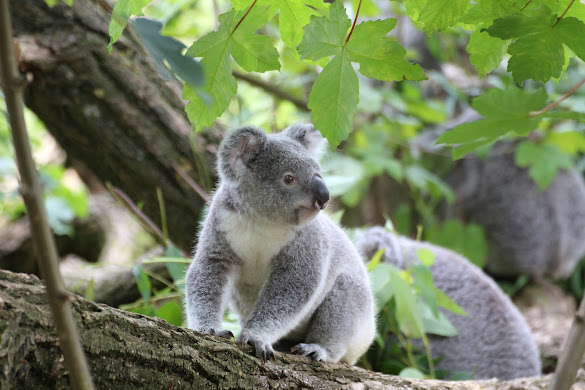
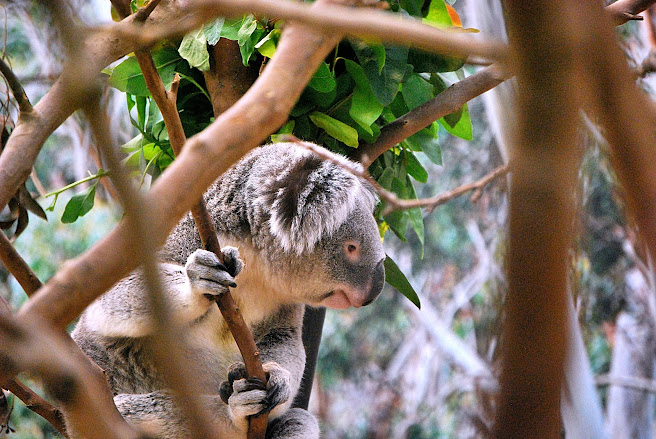
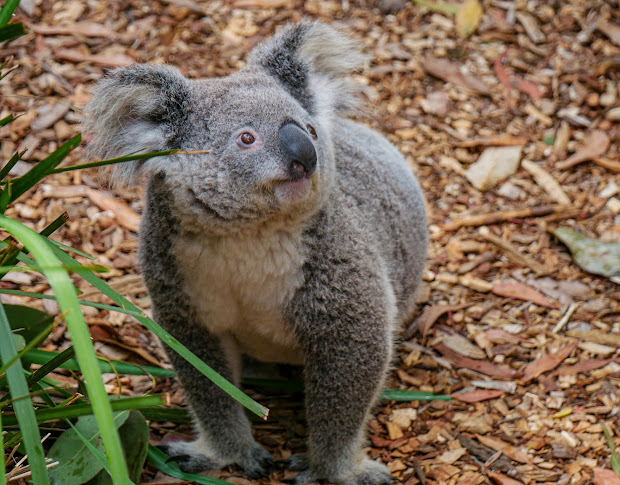
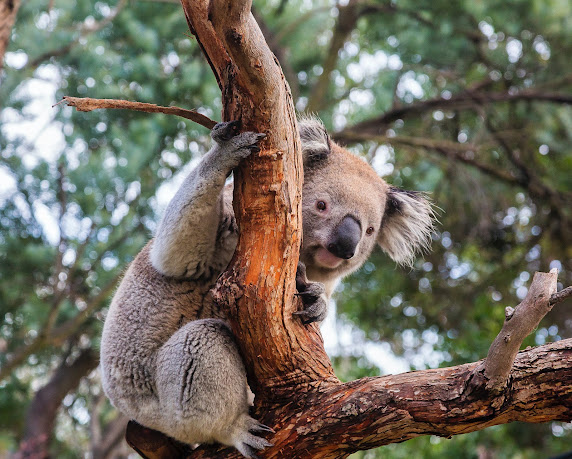


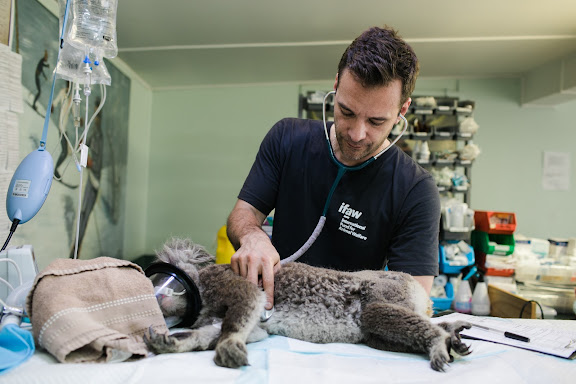
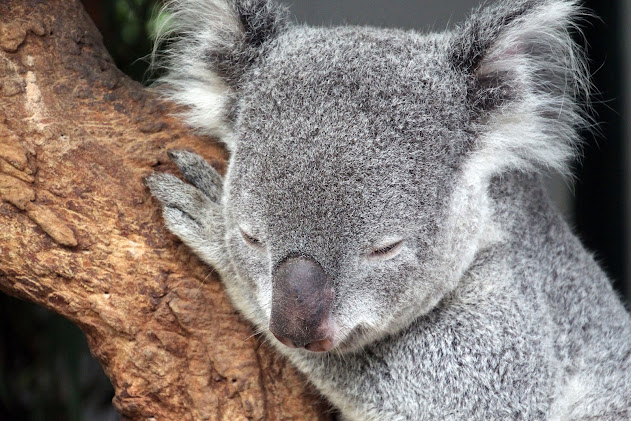



Comments
Post a Comment